
views
What does the “check gauges” light mean?

The “check gauges” light means at least one gauge is out of range. Every little dial or indicator on your dashboard refers to an individual gauge, which refers to a device that takes measurements. You have your tachometer (which measures RPMs), speedometer (which measures speed), tire pressure gauge, oil pressure, etc. The “check gauges” light means that one or more of those measuring devices has a reading that is outside of the acceptable range. Each gauge is connected to a sensor in your vehicle. These connections are housed in the PCM (powertrain control module), which is basically your car’s computer. The “check gauges” light almost always comes on alongside another indicator. This should help you narrow down which specific gauge is a problem. The PCM and ECM (engine control module) are the same thing. Some vehicles call it the ECU (engine control unit) instead.
Common Causes of the “Check Gauges” Light Coming On
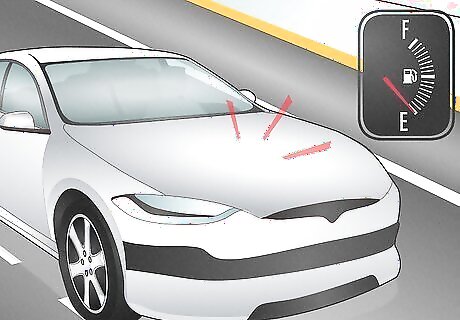
Low Fuel Rule out the simplest explanations first. Does your fuel gauge indicate that you’re low on fuel? Or, perhaps, could your fuel gauge be broken? When was the last time you filled up? If you’re low on gas, your “check gauge” light will pop on. Other dashboard indicators: On modern vehicles, you’ll get a “low fuel” indicator on your computer screen. On older vehicles, the little orange or red light at the bottom of the gauge will pop on. Other symptoms: Engine sputtering noises, intermittent power surges, and backfiring. The fix: Refill your gas tank. If the gauge is broken, see a mechanic to have it swapped out.

Low Oil After low fuel, low oil is the most straightforward possibility. If you haven’t changed your oil or refilled the oil recently, your engine could simply be running on low. Alternatively, you could have an oil leak that’s causing the oil to run low, or a bad engine oil sensor. Other dashboard indicators: The “oil pressure” light, which looks like a little canister with a droplet coming out of the spout. You may also see a “check engine” light if the oil is dangerously low. Other symptoms: Burning oil odors, poor vehicle performance, knocking noises in the engine bay, and stalling. The fix: Pull over, wait for the engine to go cold, and then check the oil dipstick to see if you need more oil. If your indicator is bad, see a mechanic to get it replaced.

Engine Overheating If your coolant levels are low, you’ve got a bad coolant sensor, or you’re pushing the engine to the limit when it’s abnormally hot out, your “check gauges” light will pop on to let you know the temperature gauge is too high. Other dashboard indicators: The temperature indicator, which looks like a thermostat on top of wavy lines. Other symptoms: Smoke or steam coming from the hood, smoky or burning odors, thumping noises, and trouble powering your vehicle. The fix: Pull over and let the engine cool off. Then, keep driving. If the issue recurs, your coolant system is damaged and you need to see a mechanic to get the proper repair. You may just need a coolant flush. If it’s been 30,000–40,000 miles (48,000–64,000 km) since you’ve added coolant, it’s definitely time for a flush.
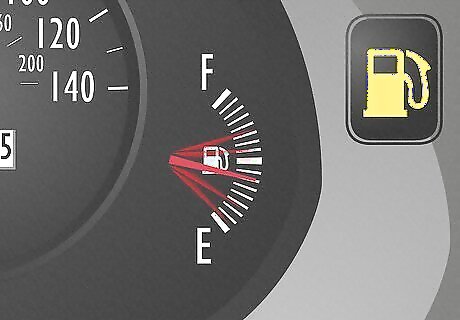
Faulty Fuel Level Sensor The fuel level sensor (FLS) is the component responsible for informing your fuel gauge of how much gas there is in the tank. If that sensor has gone bad, or the fuse that powers the sensor has died, then your “check gauges” light will pop on. Other dashboard indicators: There may not be any, although it’s likely the “low fuel” light will pop on if the dial spins erratically. Other symptoms: The dial on the fuel sensor flies around randomly, the dial doesn’t move when you fill the tank, or the dial won’t go down. The fix: See a mechanic to get your fuel sensor repaired or replaced.

Improper Tire Pressure If one or more of your tires is low on air, the “check gauges” light might pop on to get your attention and let you know a tire needs air. Either one of your tires is naturally low, or you’ve got an air leak or a flat tire. Other dashboard indicators: In modern vehicles, you’ll probably get a notification on your computer screen that a tire is low. On older vehicles, you may see the letters “TPMS” (for tire pressure monitoring system), or an “!” to indicate there’s a tire pressure issue. Other symptoms: Your vehicle may list to one particular side when you coast. You may get poor fuel mileage, or hear flapping noises. The fix: If a tire is flat, replace it with your spare. For tires that are just low on air, check each tire with a pressure gauge and then refill the low tires with an air pump.
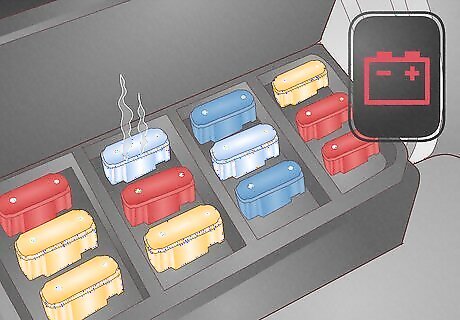
Dying Battery/Blown Fuse If there’s some kind of electrical problem, it can trick your PCM into thinking there are gauge issues when there aren’t. Every individual electrical component in your vehicle has a fuse responsible for preventing those components from being overcharged. If a fuse for a gauge goes bad, it could cause the “check gauges” light to come on. Alternatively, a dying battery may fail to provide enough juice to a particular gauge, which could also cause the indicator. Other dashboard indicators: If it’s the battery, the battery indicator may pop on. No other indicators may come on for broken or burnt-out fuses. Other symptoms: It depends on which fuses are bad if it‘s a fuse issue, but electrical problems may result in flickering lights or power problems. The fix: Replace your car battery if it’s old and you see corrosion on the terminals. Otherwise, locate the bad fuse with a multimeter and replace it. When in doubt, see a mechanic.

Defective Computer It’s rare, but a defective PCM can trigger the “check gauges” indicator to pop on. The PCM is the central computer hub for your vehicle. It connects all of the indicators and assemblies to corresponding sensors in the vehicle. If the PCM is bad though, the “check gauges” light could pop on. Other dashboard indicators: Any and all indicator lights may pop on if the PCM itself is damaged. Other symptoms: It depends on what sensors, fuses, or connections have gone bad. The fix: See a mechanic to have them diagnose and fix the issue. The PCM is among the most complicated systems in your vehicle, so it may require a specialist.
How to Fix the Issue

Use the other dashboard indicators to guide your repair. The “check gauges” light will almost always pop on alongside another indicator. After all, “check gauges” is really just the dash light that’s designed to get your attention so that you’ll look at your gauges. Pay attention to the other indicators and use those to guide your diagnostics and repair process. If there are no other dashboard indicators, see a mechanic. The “check gauges” light on its own is a bit of a worrying sign since it points to a broader problem with your vehicle's PCM.
Can I drive with the check gauges light on?
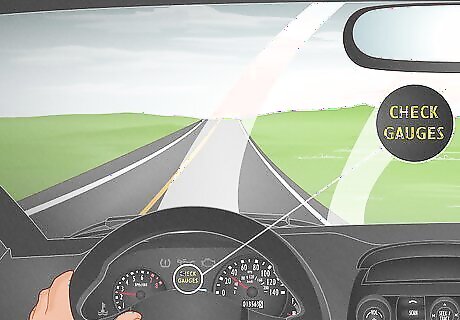
So long as your car is functioning, yes, you can drive. If your vehicle is operating the way it normally should and you aren’t low on gas or oil, you should be okay to drive a short distance without running into any serious problems. Go to a mechanic soon to get this issue dealt with, but don’t worry about your car struggling to get you from point A to point B. If you are low on oil, you cannot continue to drive. Your engine requires oil to run properly, and your car can catch fire if your engine is running out of oil. If you’re low on gas, you’re going to run out of juice soon and you need to get to the nearest gas station or pull over.
Preventive Measures and Maintenance

Perform your regular basic maintenance to prevent gauge issues. Most of the issues that cause the “check gauge” indicator to pop on can be avoided by taking care of your vehicle’s regular maintenance tasks. Refer to your manual to determine when you need to go in for basic service based on your make and model. In general, make sure that you perform the following regular tasks: Check your oil regularly and add engine oil whenever levels fall to the “add quart” level on the dipstick. Get regular oil changes and have your power steering and transmission fluid levels regularly checked to spot potential issues. Check your tire pressure regularly and refill them as needed. Rotate your tires every 5,000–7,500 miles (8,000–12,100 km) or so. Have your brake pads replaced whenever your tires begin making noise. Get your filters inspected regularly and have them replaced as needed. Keep your tank at least ¼ full, and don’t allow the gas level to drop to dangerously low levels.
















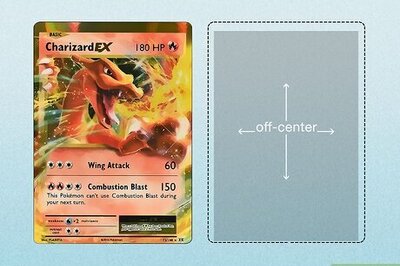

Comments
0 comment